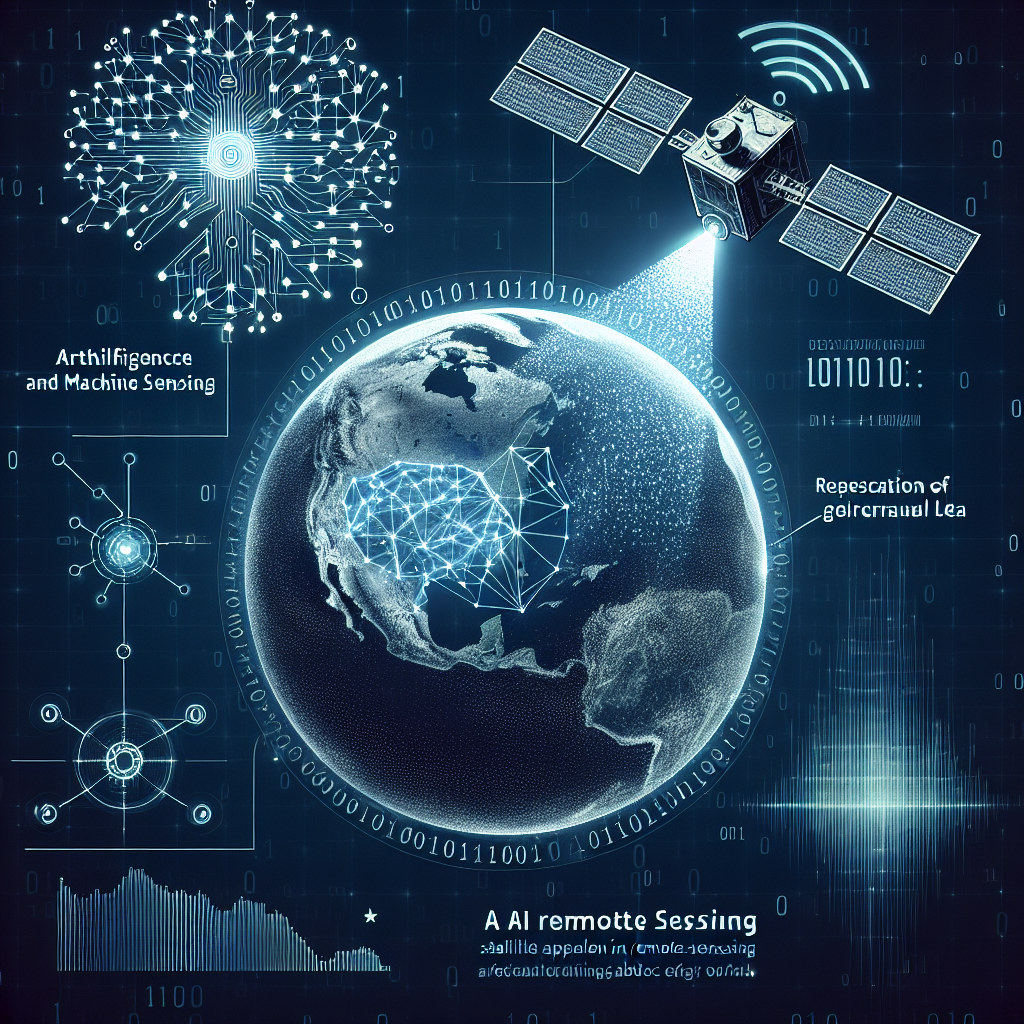The Future of AI and Machine Learning in Remote Sensing
Remote sensing, the science of gathering information about an object or phenomenon without making physical contact with it, has become increasingly important in various fields such as environmental monitoring, agriculture, urban planning, disaster management, and more. With the advancement of technology, particularly in the fields of artificial intelligence (AI) and machine learning, remote sensing has seen a significant transformation in recent years.
AI and machine learning technologies have revolutionized the way remote sensing data is collected, processed, and analyzed. These technologies have the ability to quickly and accurately analyze large volumes of data, leading to improved decision-making and insights. In this article, we will explore the future of AI and machine learning in remote sensing and how it is shaping the way we interact with our environment.
Advancements in AI and Machine Learning
AI and machine learning have made significant advancements in recent years, leading to improvements in remote sensing applications. One of the key areas where AI and machine learning have been applied is in image processing. These technologies enable the automatic detection and classification of objects in images, such as buildings, roads, vegetation, and water bodies. This not only saves time and resources but also improves the accuracy of the results.
Another area where AI and machine learning are making a difference is in the analysis of hyperspectral and multispectral images. These technologies can extract valuable information from these images, such as the health of vegetation, soil moisture levels, and mineral composition. This information can be used to monitor the environment, predict crop yields, and assess the impact of natural disasters.
AI and machine learning algorithms are also being used to predict environmental changes, such as deforestation, urbanization, and climate change. These algorithms can analyze historical data and trends to make accurate predictions about future events. This information can help policymakers and stakeholders make informed decisions about how to mitigate the effects of these changes.
The Future of AI and Machine Learning in Remote Sensing
The future of AI and machine learning in remote sensing is promising, with many exciting developments on the horizon. One of the key trends in this field is the integration of AI and machine learning algorithms with other technologies, such as drones and satellites. These technologies can work together to collect and analyze data in real-time, providing a more comprehensive view of the environment.
Another trend is the development of AI-powered autonomous systems that can collect and analyze data without human intervention. These systems can be used to monitor large areas of land, water, and air, providing valuable insights into the environment. This can help researchers, policymakers, and stakeholders make informed decisions about how to manage natural resources and mitigate the effects of climate change.
In addition, AI and machine learning are being used to improve the accuracy and efficiency of remote sensing data collection. These technologies can automatically correct for errors in data, such as atmospheric distortion, cloud cover, and sensor noise. This leads to more accurate and reliable results, which can be used to make better-informed decisions.
FAQs
Q: What are some of the key challenges in using AI and machine learning in remote sensing?
A: Some of the key challenges in using AI and machine learning in remote sensing include the need for high-quality training data, the complexity of the algorithms, and the computational resources required to process large volumes of data.
Q: How can AI and machine learning help in disaster management?
A: AI and machine learning can help in disaster management by quickly analyzing remote sensing data to assess the extent of the damage, predict future events, and provide real-time information to first responders and emergency management personnel.
Q: What are some of the ethical considerations in using AI and machine learning in remote sensing?
A: Some of the ethical considerations in using AI and machine learning in remote sensing include the potential for bias in algorithms, the privacy concerns of individuals whose data is being analyzed, and the need for transparency and accountability in decision-making processes.
Q: What are some of the future applications of AI and machine learning in remote sensing?
A: Some of the future applications of AI and machine learning in remote sensing include the use of autonomous systems for environmental monitoring, the development of predictive models for climate change, and the integration of AI with other technologies such as drones and satellites for real-time data collection and analysis.
In conclusion, the future of AI and machine learning in remote sensing is bright, with many exciting developments on the horizon. These technologies have the potential to revolutionize the way we interact with our environment, providing valuable insights and information that can help us make informed decisions about how to manage natural resources and mitigate the effects of climate change. With continued advancements in technology and research, we can expect to see even more innovative applications of AI and machine learning in remote sensing in the years to come.

